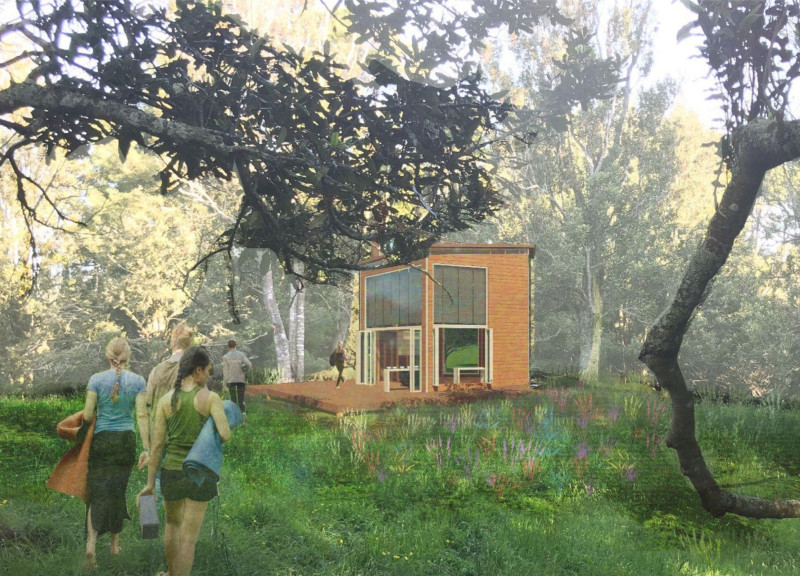5 key facts about this project
The Whārite Meditation Cabin is located in a quiet forest clearing that is surrounded by Banksia trees. This space serves as a place for meditation and self-reflection, designed to connect with the natural environment. The cabin’s concept revolves around the idea of balance, represented by its hexagonal shape. This unique geometry encourages a sense of unity among those using the space.
Architecture Concept
The hexagonal design not only complements the layout of the site but also improves how people move around inside. This shape fosters intimacy and makes it easy for voices to carry, enhancing communication during meditation sessions. Users can feel a sense of closeness, making the experience more personal.
Design and Orientation
The cabin has been carefully placed to respond to the local climate, particularly focusing on sunlight and wind. To reduce heat from the sun during the summer, the design limits window glazing on the roof. Openings are positioned on the east and west sides to welcome natural light at optimal times throughout the day. This approach keeps the cabin comfortable and minimizes reliance on artificial lighting.
Material Selection
Attention to materials plays a significant role in the cabin’s design. It uses New Zealand sourced pine, known as Pinus radiata, and Timaru Bluestone. These materials were selected for their strength and local availability, ensuring that the cabin remains connected to its environment. Structural Insulated Panels (SIP) made in New Zealand enhance energy efficiency. This choice supports thermal performance while keeping the structure lightweight.
Functional Features
A movable altar meant for creating flower essences adds a special touch to the cabin. It provides flexibility and invites users to interact with nature. This feature enhances the primary purpose of the cabin, allowing for a deeper engagement with the personal practice of meditation.
Light pours through the well-placed windows, brightening the interior. The smooth wooden surfaces and the rugged stone create a calming atmosphere, encouraging visitors to pause, reflect, and find peace in the simplicity of their surroundings.






















































